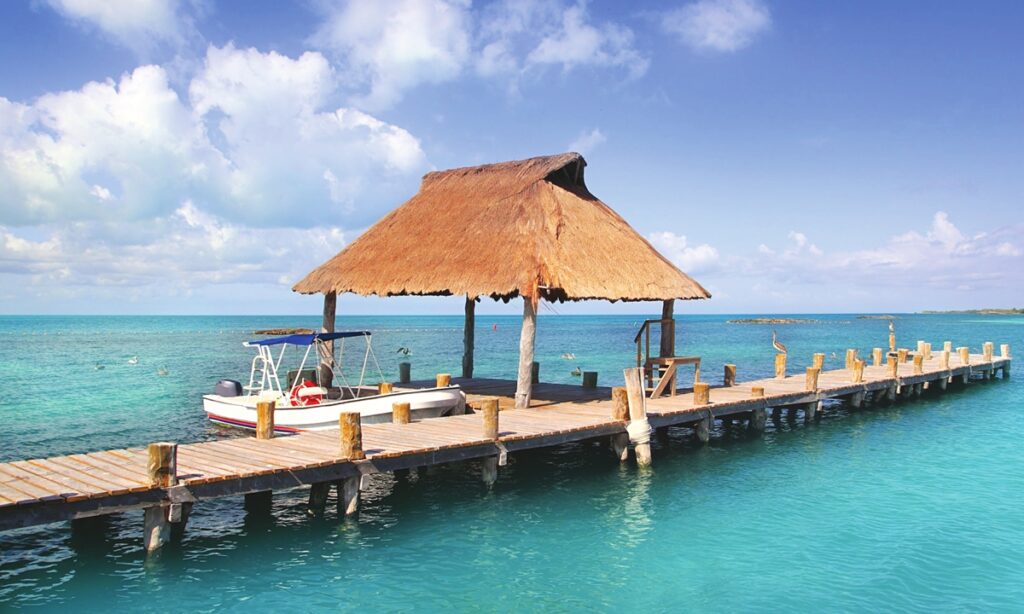Maria Eugenia Sanchez and Sebastian Fernandez basked in the brilliant Cancun sunshine having snapped up a deal as part of the Mexican seaside resort’s reopening following three months of coronavirus lockdown.
“We wanted to leave the country this year and go to Europe, but due to this situation with the lockdown and [lack of] money it wasn’t possible. So we decided to take advantage of the deals and come to Cancun for a few days,” Sanchez told AFP.
The couple, both of whom are in their 30s and work in a law firm in Mexico City, spent $80 on their airfare, around $100 less than the normal cost.
“We’ve come to relax, to free ourselves from stress after so much tension and uncertainty,” said Fernandez, who was working remotely while in Cancun.
They were among the few tourists to arrive as the town reopened its doors on Monday.
Tourism accounts for 90 percent of the economy in the southeastern Quintana Roo state where Cancun is located, and local authorities have declared it an essential activity – although hotels are not allowed to exceed 30 percent capacity.
Tourism in the rest of the country of 127 million will be reactivated according to local risk levels.
Mexico is one of the 10 most-visited countries in the world and tourism accounts for 8.7 percent of its GDP.
But it is also one of the worst hit countries in Latin America by the coronavirus pandemic. With more than 124,000 cases, it has the fourth highest number of infections in the region, and with over 14,600 deaths, it comes in second only after Brazil for fatalities, according to Wednesday’s figures.
Cancun, one of the most popular tourist destinations, has recorded 325 deaths and more than 1,500 cases.
‘Nothing to eat’
Approximately 40 hotels have reopened, with staff disinfecting surfaces and lounge chairs beginning early in the morning.
They were authorized to open after northern Quintana Roo’s status was changed from red to orange under Mexico’s new “traffic light” plan to restart the economy.
When the area achieves yellow status, hotels will be allowed to increase capacity to 50 percent, and full occupancy will be permitted once Quintana Roo is declared as a green zone.
Hotels have opened with strict rules about social distancing, disinfection stations and face masks for staff.
Starting last week the regional tourist promotion council began intensive advertising to attract foreign visitors.
Mario Ruiz, one of 90,000 sector employees laid off during the crisis, has already had interviews for a new job.
With no salary and unpaid rent building up, he’s at the end of his rope.
“There’s nothing to eat. They tell us to stay at home because you can catch it, but you can’t [stay home]. Not even the rich can!” Ruiz told AFP.
‘Better to wait’
Coronavirus has marked Cancun’s worst crisis since it was founded as a planned tourist destination 50 years ago, according to state tourism secretary Marisol Vanegas.
She’s hoping occupancy will reach 30 percent in June and increase by 5 percent in July.
But businessman Abelardo Vara believes a second wave of infection could generate an even worse crisis.
“The best thing would be to wait until July 1 and, if things haven’t improved, wait longer,” the hotel owner said.
On top of the pandemic, the region is facing a second potential problem: the return of the stinky seaweed sargassum that has blighted Cancun’s beaches for the last five years.
The plant turns clear-blue water murky brown and smells like rotten eggs when it washes ashore and starts to decompose.
A study conducted by the University of Southern Florida and NASA predicts sargassum will return to the area in moderate quantities in June and in larger amounts in July and August.
Mexico’s navy says it has already installed barriers and will deploy ships to try to intercept it before it arrives.
VA dock in Cancun, Mexico Photo: IC


